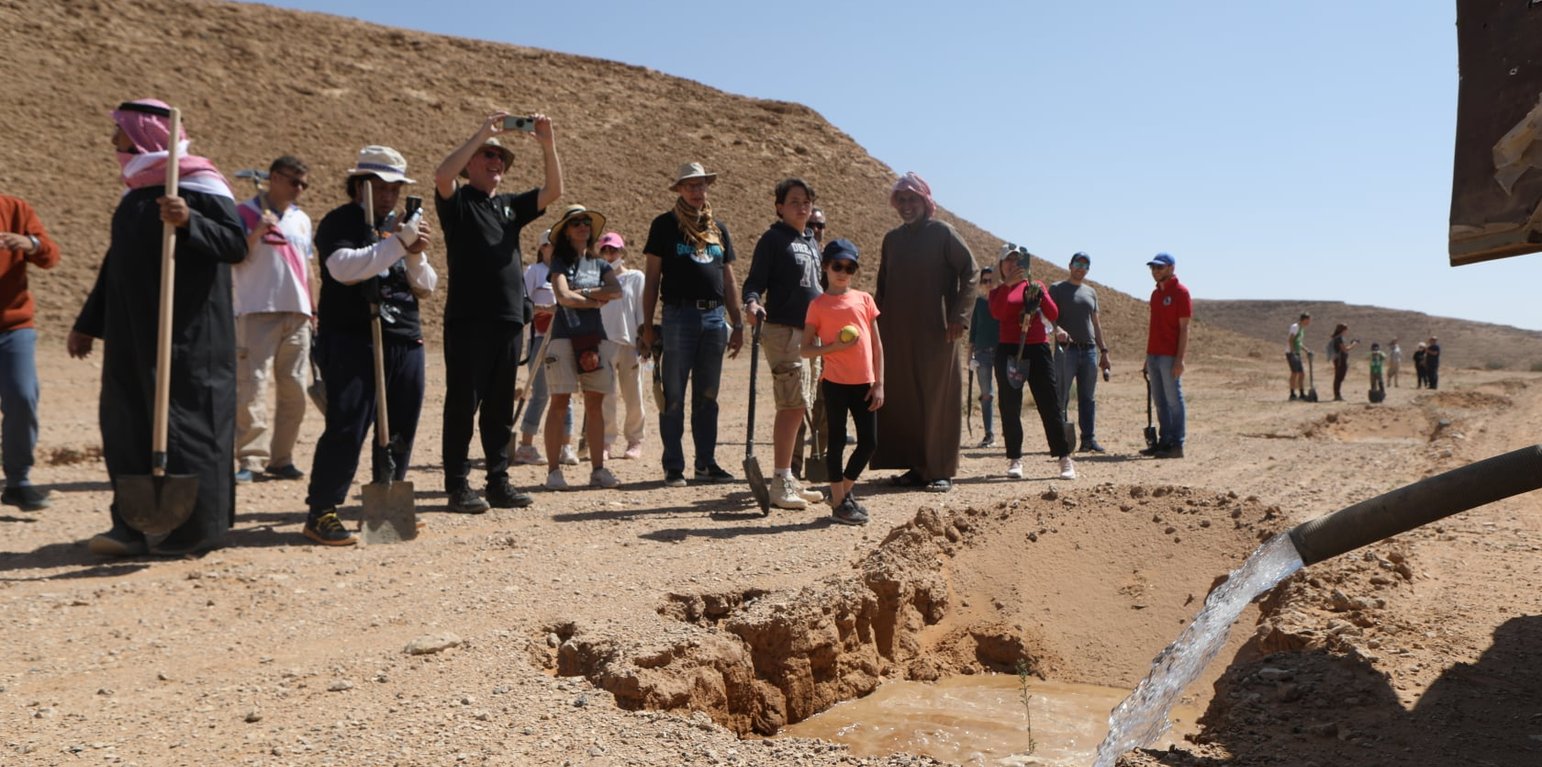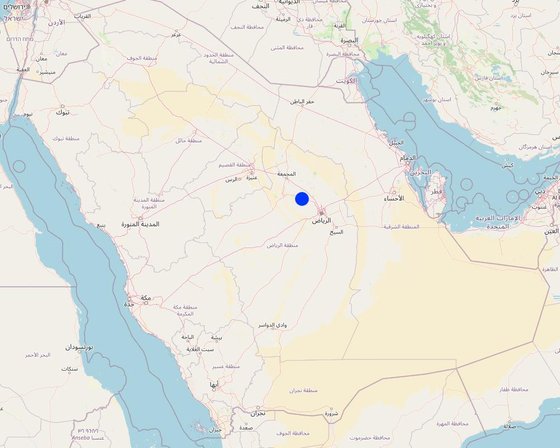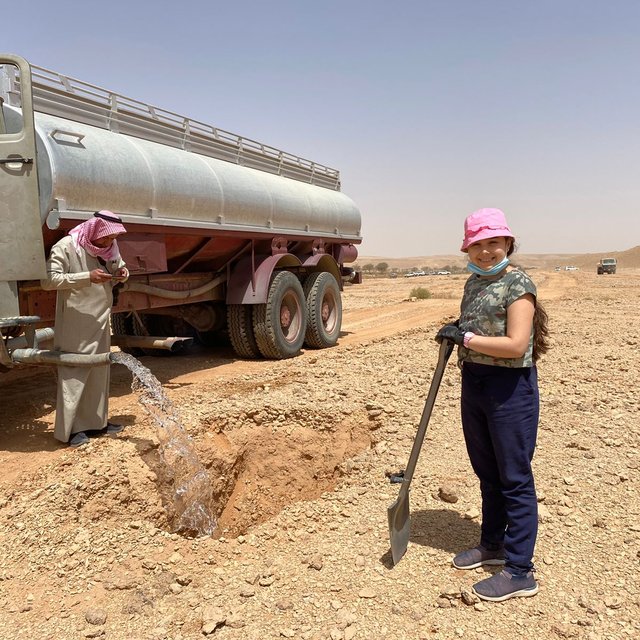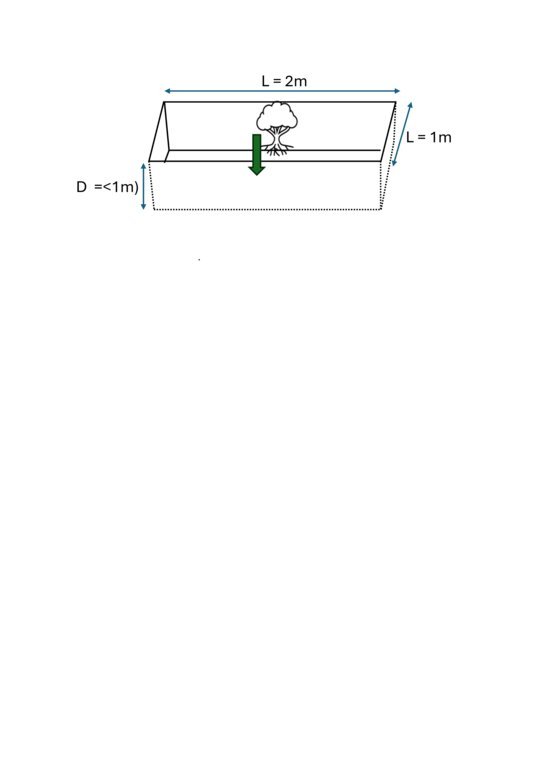



Plantation pits are water harvesting structures which capture rainfall runoff for planting trees and shrubs. They can also be watered manually. The pits are dug within national parks managed by the National Centre for Vegetation Cover Development and Combating Desertification (NCVC). They may be located within wadis and sheyhib (small wadis) ranging from ten to several hundred metres in width, but also on high plateaux. Each plantation pit is rectangular, measuring 2m long, 1m wide, and up to 1m deep (depending on the depth of the soil). They are excavated by mechanical diggers. Pits are dug up to two years before planting, and they collect both runoff and the rich organic and mineral matter material carried in the runoff. After one year, many annual and even perennial plants have usually colonised the bottom of the pit. Trees and shrubs (including Acacia spp., Ziziphus spp. and Haxloylon spp.) are planting in the middle of the pit, without disturbing the existing vegetation as far as possible. These species attract bees, and beekeeping has been promoted alongside tree planting.
This water and nutrient harvesting technique is effective even in the very arid conditions – where rainfall may be less than 100 mm per year. However, some supplemental irrigation is needed, and each pit is watered, for example, around 7 times over the following year and a half, with a volume of water ranging from 20 to 100 litres each time per pit, depending on availability. Watering helps the plant to survive and the large quantity of water penetrates deep into the soil. As it moves downwards, it draws the roots downwards until they reach the water table. This is when watering can be stopped, often after 3 or 5 years. This is why the interval between watering is important, to effectively "pull the roots down" while leaving the plant enough water in the soil to survive. Although the costs are high, the results are generally very satisfactory in terms of planting and survival. The local impact is significant when there are enough pits per hectare, i.e. around 100 or more. Over the last five years one and a half million pits have been constructed. The technical design of the pits was formulated by Abdulla Al Eissa, the park manager, but FAO has been responsible for technical advising on planting operations. The activities are part funded by the NCVC, while local donors and volunteers contribute the remainder of the costs.
This activity is supported by the Food and Agriculture Organization of the United Nations (FAO), project: Strengthening MoEWA's Capacity to implement its Sustainable Rural Agricultural Development (SRAD) Programme (2019-2025) UTF/SAU/051/SAU.

Location: Thadiq National Park, Riyadh Region (Province), Saudi Arabia
No. of Technology sites analysed: 10-100 sites
Spread of the Technology: evenly spread over an area (145.0 km²)
In a permanently protected area?: Yes
Date of implementation: 2019
Type of introduction







| Specify input | Unit | Quantity | Costs per Unit (USD) | Total costs per input (USD) | % of costs borne by land users |
| Labour | |||||
| Technician | 100.0 | ||||
| Worker | 100.0 | ||||
| Equipment | |||||
| Truck | 100.0 | ||||
| Excavator | 100.0 | ||||
| Plant material | |||||
| 100 seedlings per ha | 100.0 | ||||
| Specify input | Unit | Quantity | Costs per Unit (USD) | Total costs per input (USD) | % of costs borne by land users |
| Plant material | |||||
| 30 seedlings per ha | 1.0 | 100.0 | |||
Tourism with guides and Tour operators
Can double the vegetation cover in 10 years
Development of picnic and recreation once trees have grown
Recharging the water table